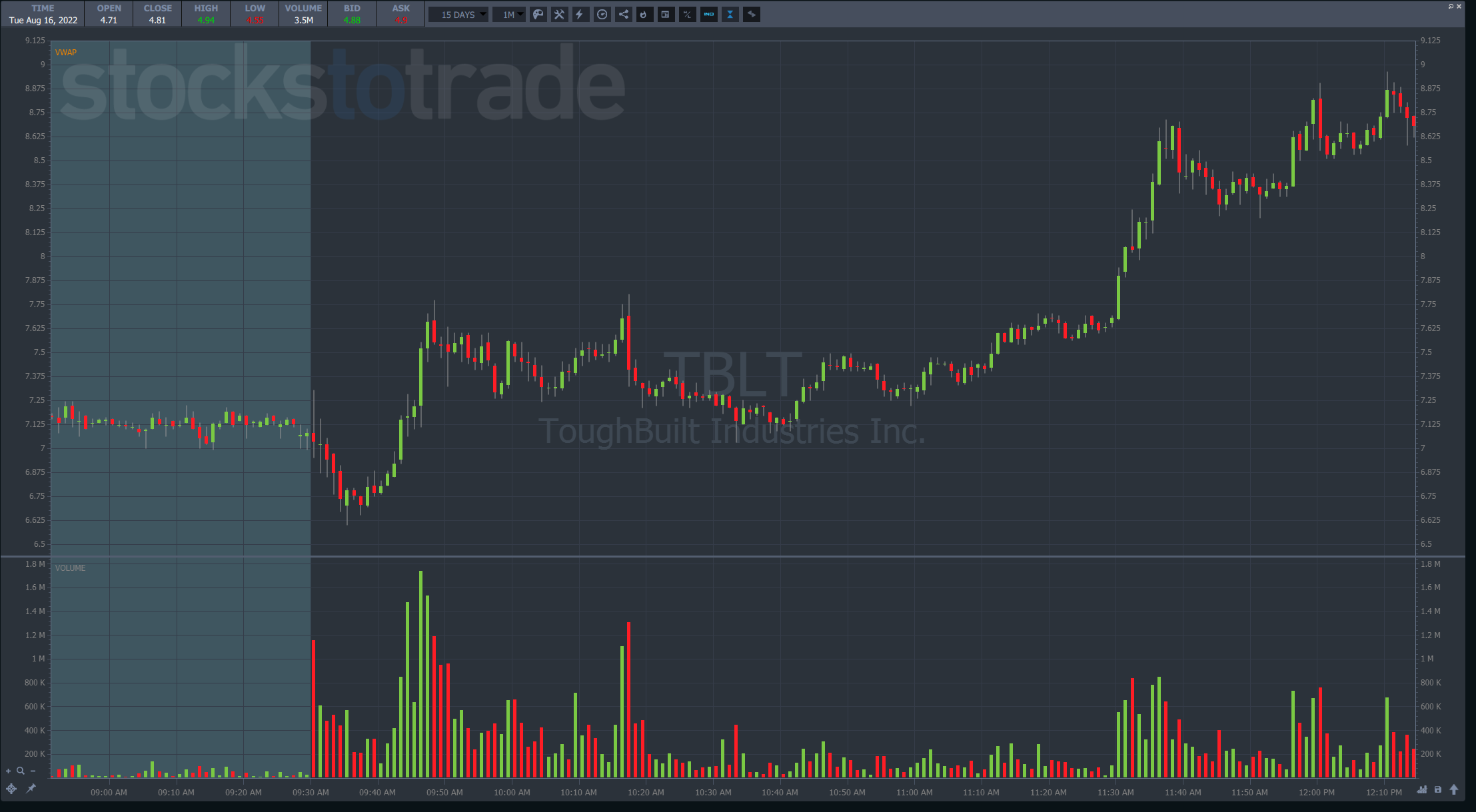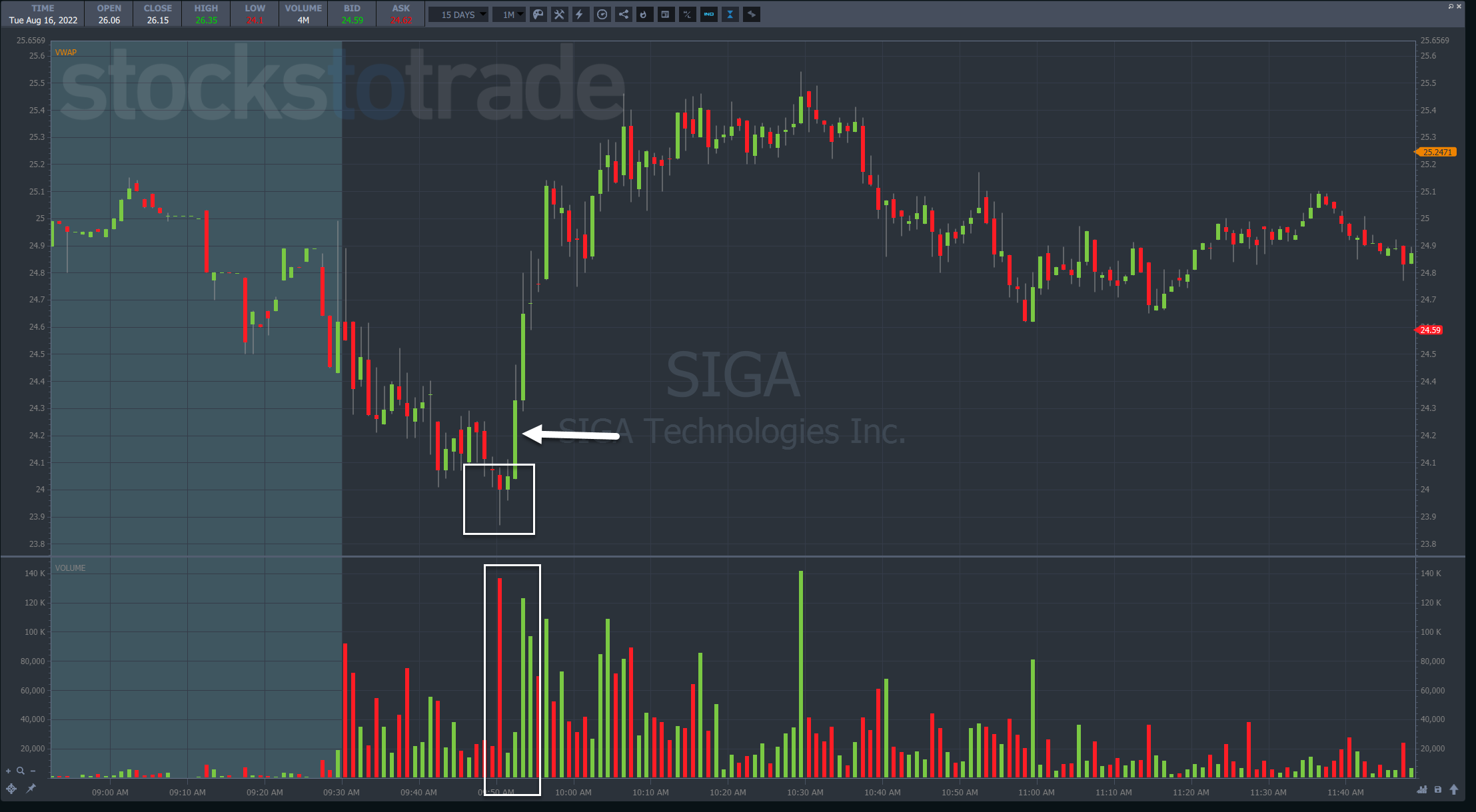[ad_1]
I used to think I wasn’t smart enough to trade on Wall Street.
Even though I excelled in school, I had this idea in my head that hedge funds were run by MENSA billionaires.
After a few years of trading one of the most basic patterns out there, it dawned on me…
Anyone can become a successful trader.
Just look at the diversity amongst my millionaire students.
The problem most traders face isn’t a lack of information but TOO MUCH information.
With thousands of indicators and strategies, it’s easy to get lost in the noise.
Rather than struggle against the current, I developed three simple ways to make trading easier.
These techniques narrow your focus to higher-quality setups that produce better results and are easier to manage.
1. Avoid Choppy Stocks
I want to show you two bullish charts. You tell me which is easier to trade from the long side.
To me, the first chart is much easier to trade to buy and hold than the second.
In the first chart, price moves up in a steady, smooth trend with small pullbacks along the way.
In the second chart, shares drop initially, pop hard, chop around before dropping down, and ultimately run into the breakout.
Rather than thinking about which stock will run the furthest, ask yourself which stock is most likely to provide the smoothest ride higher.
That might seem counterintuitive, considering I prefer to buy dips.
However, both of these stocks pulled back along the way.
The difference is the second chart was much choppier.
Chop is the #1 enemy of a trader trying to squeeze out gains from their trade.
I can’t tell you how many times I’ve been tossed out of a potentially huge trade early because of chop.
The way I avoid this is by selecting stocks with lower floats.
Generally speaking, I’ve found that stocks with high floats tend to chop around more and not provide as large of spikes.
On the other hand, low float stocks can bounce hard, giving me a better reward for the risk I take.
And when they decide to run, they tend to do it in a straight line than zig-zag.
The other benefit of cleaner charts is they make it easier to define your stops and profit targets.
Choppy price action makes it difficult to determine which support level is the right one.
Smoother charts give you fewer choices, making this process much simpler.
2. Structure Your Execution

I would say that most of my trades have one entry and one exit.
This isn’t necessarily the best way to trade, but it’s the way that works best for me.
The fewer entries and exits you have, the easier it is to manage your trades.
If you want to scale in and out of trades, it’s best to devise a standard approach.
For example, a trader could set up the following execution strategy:
- Entries
- Buy 50% of the position at the main entry
- Add the other 50% halfway between the main entry and the stop
- Exits
- Sell 50% of the position at the 1st profit target while setting a stop on the remainder back at breakeven.
- Sell another 50% at the next profit target and set a stop back at the first profit target for the remainder.
- Repeat until you are out of the position.
The method you choose for entries and exits depends entirely on your style and risk tolerance.
Some traders, like myself, do one entry and one exit.
Others prefer to scale.
Whichever you pick, lay out simple rules to follow no matter what.
3. Wait for Confirmation

Traders are an impatient bunch. We want to be in THAT trade when we see a stock moving.
Learning how to dip buy takes patience and practice.
In the meantime, you can use candlestick signals to confirm a bottom before stepping into a trade.
The downside is you may not get as good of an entry. However, it also avoids entering a trade at the wrong spot.
And for newer traders, that’s a bigger concern than getting the entry down to the penny.
Let me give you an example.
In the chart below, I highlighted the bottom where we might want to dip buy.
The first thing I want you to notice is the red candlestick with a long tail on heavy volume.
That’s a typical sign of a reversal.
However, say a newer trader wanted a bit more confirmation.
They could wait until the close of that big green candle the arrow points to, which came with heavy volume.
Although that would put the entry much higher than the low, it still provides plenty of upside potential.
As a trader gets more comfortable with dip buys, they can go reduce the number of confirmation signals they look for.
Final Thoughts
All it takes is one pattern to change everything. Start small and simple. Get really good at just one thing. Once you can turn a profit, then you expand into adjacent strategies.
–Tim
[ad_2]
Image and article originally from www.timothysykes.com. Read the original article here.



